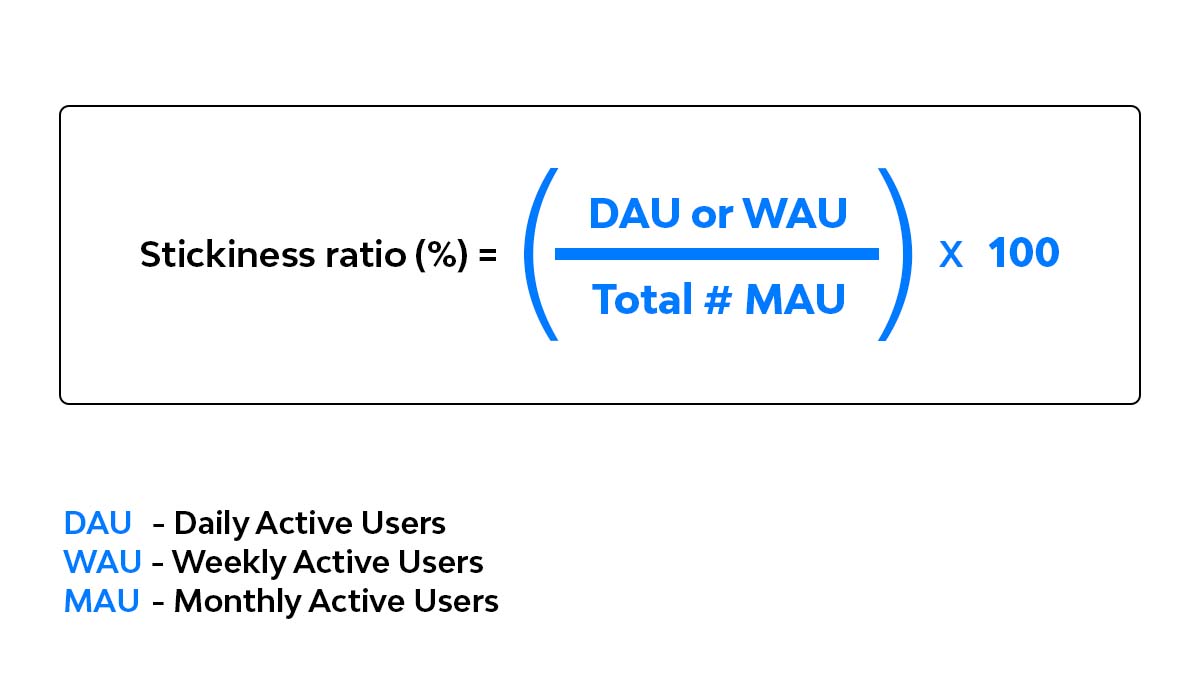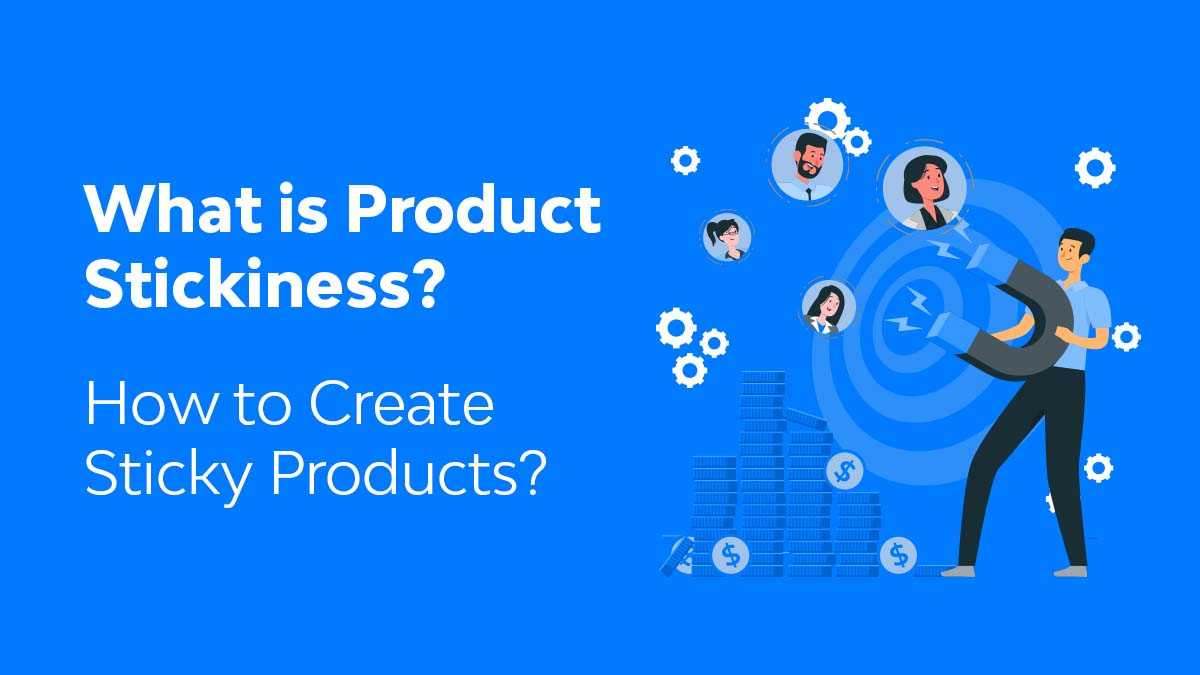Do you find it challenging to retain customers? Or, even if you have a great product, do you still need some essential parts to ensure your customers are happy and keep coming back? you need to evaluate product stickiness ASAP.
In this highly competitive environment, you can stay ahead and avoid significant losses if you can retain your current clientele and acquire new ones. Unfortunately, that’s the most significant issue SaaS companies are experiencing.
The solution to this is straightforward: – stickiness. A sticky product helps users have a great experience and use features throughout the customer journey, which keeps users coming back.
Let’s dive deeper into product stickiness and its measurement.
What is product stickiness in SaaS?
“Product stickiness” in SaaS means that users will likely keep using your product because they find it fun and valuable.
Your customers’ everyday routines get imprinted with a sticky product. If your product is sticky, people will use it more often and be more likely to keep paying for it.
When considering stickiness, it’s essential to remember that a product isn’t sticky if its brand has yet to create any buzz. Known brands create buzz, and their customers are so ecstatic that they publicly gush about them.
No matter what product you offer, you must create value and communicate it to customers if you want them to spread the word about you and your business. The better you are at consistently meeting their requests, the more likely they will talk about you and make you stickier. Also, the effort must start from the user onboarding of a product
Consequently, once you’ve found a fit, keep highlighting your value, incorporate it into your main feature, and pay attention to what your customers say.
How to Measure Product Stickiness for a SaaS Company?
The user count is crucial when determining a product’s stickiness ratio. There is a valid need to conduct additional studies, even if they are straightforward to compute.
Divide the daily active users by the monthly active users to get the product stickiness ratio. This measurement must be used to calculate the stickiness ratio, which is crucial.
Product stickiness rate is one of the essential product metrics you should keep an eye on to see if your product or service is valuable. It shows how often customers come back to your product or service.
Product stickiness = Daily Active Users (DAU) / Monthly Active Users (MAU)

The product stickiness ratio allows the product manager to determine how much improvement the product must undergo over time. It’s also helpful to learn about the significant differences between the types of people who use the product and how they use it.
Even user behavior that changes over a predetermined period can be monitored.
First, the total number of users logged in during the last 30 days must be divided by the average daily or weekly login rate to calculate the average daily or weekly login rate.
Every day, the values are recalculated to find the product stickiness ratio, which is a moving average of how long users stay with a product.
You need to determine which users are being retained and which are leaving based only on this rate. You must conduct cohort analysis to segment consumers based on their use cases.
Additionally, if customers use your app sparingly, the stickiness rate might not be accurate. So, there would need to be metrics for the product, such as the lifetime value of a customer, the rate at which customers leave, and the rate at which customers stay.
Why is it crucial to measure Product Stickiness instead of DAUs and MAUs alone?
It can be quite challenging to compare DAUs and MAUs across different companies because they are independent statistics. Additionally, every company has a unique definition of active users.
However, when it comes to measuring DAU/MAU ratio, it develops into a specific metric that guarantees you’ll provide facts regarding product consumption. Because the ratio’s outcome is a percentage, you may contrast it with data from other businesses to understand how those businesses arrived at their user engagement goals.
How to use the stickiness ratio to measure product health?
DAU/MAU ratio can be used to measure another crucial aspect of a product. That’s product health! The number of users you have, as measured by DAU or MAU, might be informative, but it says nothing about the quality of your user base.
The stickiness ratio is helpful for leaders of products because it allows them to see how often users typically interact with their product, how that use varies across different types of users (personas), and how it evolves.
With a DAU/MAU ratio of 0.6, 60% of monthly visitors also make daily visits to the product. This is considered as good in terms of product health. However, it has to be kept in mind that if the DAU/MAU is low, that doesn’t mean that your product is unhealthy in the cases of multiple products.
The ratio may be low because of both infrequent and dedicated users. Here, you should look at what may be done to increase the number of deeply involved people.
What are product stickiness metrics?
In addition to the DAUs/MAUs ratio, there are two other product stickiness metrics that you should keep an eye on.
Open rate
The “open rate” is the percentage of users who installed and used your product within a specific time frame.
The more often customers must use your product, the greater the open rate for products with low stickiness; the available monthly rate may be 10% or less.
However, if your product consistently sends out notifications, users may only download the app if they intend to use it.

Lness
The Lness distribution is a good predictor of product stickiness over time. The higher the percentage of Lness, the stickier your product.
The total number of days that visitors spent there during a given period is shown by Lness. For instance, L21+/28 displays the percentage of customers who use your product at least 21 times a month.
L5+7 represents the proportion of users who visited your product at least five times per week.
What is a good product stickiness for SaaS Companies?
There are no specific markings for good or bad product stickiness. If your product has a low stickiness rate, you don’t have to assume it doesn’t work well. Whether or not your stickiness rate is good or bad depends on your product’s intended usage.
In SaaS companies, a stickiness rate of 20% is regarded as good, and a rate of 25% or above is considered very good.
The typical stickiness rate in SaaS companies is 13%. Each user logs in less than four days of activity every month. The median rate is 9.3%, or less than three days of exercise per user per month, which is another important consideration.
The product stickiness and different stages of the product life cycle
When a B2B SaaS company is just starting, gaining new clients comes before retaining existing ones. However, repeat customers account for a sizable share of the product stickiness as the product progresses through its lifecycle and approaches the mature stage.
Since the market is completely saturated, CAC rises throughout the mature phase. Therefore, maintaining relationships with existing customers is more crucial than expanding to new ones. Your B2B SaaS company’s product stickiness may be lower at the beginning and more significant later.
Value of the product stickiness ratio to a B2B SaaS company
The product stickiness ratio may help the various departments within a B2B SaaS organization work together more effectively.
Product Team
The product manager may use the product stickiness ratio to determine whether an update to the current product is feasible or if a new product must be developed. It also aids in determining how the product’s intended audience will use it, positively affecting the product roadmap.
Marketing team
The marketing manager of a B2B SaaS firm may use the product stickiness ratio to categorize their clientele, prioritize the group with the lowest product stickiness, and work to boost their use of that group.
This may be achieved using many methods at the marketing manager’s disposal, including instructional email campaigns, push alerts, etc. In addition, the marketer may create a persona that mirrors the demographic with the most substantial product stickiness. Such a large group is more likely to remain consistent.
Customer success team
By dividing customers into groups based on how much they use a product, the customer success manager can plan upgrades for them.
Suppose a client has a low level of product stickiness. In this case, a customer success manager can devise a plan to keep customers since customers who don’t use their products very often are more likely to leave.
How to Create Products that Stick/How to increase product stickiness?
Even if you have ideas about making your product stickier, you can use these five tips to make it work.
Have a Clear Customer Success Plan
If the purpose of your customer success strategy is to assist your clients in reaching their objectives using your service or product, then you need a customer success plan. The plan is the ultimate tool that can spell out your product’s worth to clients and your proposed method of providing that value.
Habit formation
It’s difficult to break a habit. Once your clients utilize your product routinely, its stickiness rate can rise significantly. Offer your customers features that they frequently use and gradually increase the open rate to help them develop a habit of using your product.
Personalization
When customers discover a product that addresses their day-to-day/frequent issues, they will be driven to use it involuntarily. In short, Give your customers a product that addresses the specific demands that will make them keep returning to your product, increasing the product stickiness rate.
Keep it simple
If people have trouble figuring out how to utilize your product, they may not rebuy it. Don’t add unnecessary complexity that will only annoy them. Customers will be more inclined to utilize your goods if you keep them in good shape.
Work on User Feedback
Use surveys to gather user feedback, then address it. Customers appreciate having their opinions acknowledged and considered since it builds their trust.
Make the setup simple. Clients may be reluctant to use it from the beginning if they find it difficult to set up your product. After all, the first impression is the most lasting. Always strive to make the setup procedure simple to make a great first impression and raise the likelihood that clients will use your product again.
Relation between stickiness and customer retention
Your product has to expand its user base to realize its full potential and benefit the most significant number of people. Stickiness is often seen as the driving force behind customer retention. However, this isn’t always the case.
Stickiness refers to people who continue to use your product despite having plenty of alternatives. As a result of stickiness, less reliance on strategies like push notifications is required.
Conclusion
Product stickiness is when most customers still value your product and don’t want to stop using it.
A sticky product will have higher feature adoption rates and improved user engagement. And the more clients you retain, the more likely you will prosper and carve out a significant niche for yourself.







